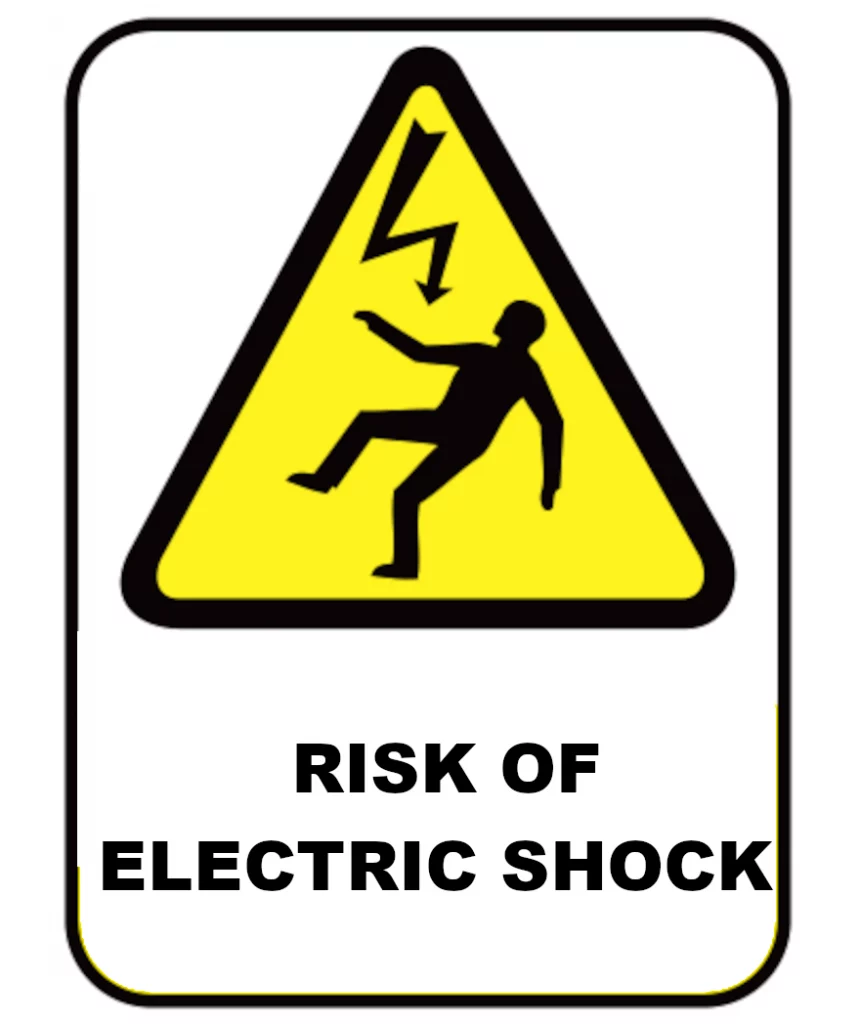Electric Shock
Electric shock is defined as a dangerous physiological effect resulting from the passage of electric current through a human body or livestock. A useful reference document is British Standards Institution (BSI) publication PD 6519 'Guide to effects of current on human beings and livestock' and IEC TS TS 60479-1 - Effects of current on human beings and livestock – Part 1: General aspects. This relates the magnitude and duration of electric currents to the probable severity of their effects, based on information gathered internationally.
Two conditions of electric shock are recognised:
(i) under normal conditions, i.e. Direct contact which is contact of persons or livestock with live parts, sometimes called electric shock in normal service, and
(ii) under single fault conditions, i.e. Indirect contact which is contact of persons or livestock with exposed-conductive-parts (such as the metallic enclosure of an item of Class I equipment) made live by a fault, sometimes called electric shock in case of a fault.
With regard to indirect contact, in normal dry situations, 0.4 s Is the maximum disconnection time for a socket-outlet circuit (except for one specifically provided for fixed equipment) and 5 s as that for a circuit feeding fixed equipment.
This approach has been adopted in the International and European Standards, as it offers the most practical means of fulfilling the basic requirements for protection against electric shock. A dry condition is defined as a condition of the skin of a surface area of contact with regard to humidity of a living person being at rest under normal indoor environmental conditions.
Direct Contact
Direct contact is much more likely to result in serious injury or death than indirect contact, for the following reasons:
(i) the body is liable to experience the full supply voltage across it
(ii) the passage of electric current will not be interrupted by overcurrent protective devices.
A person making contact between phase and neutral will be seen by any overcurrent protective device as a small load, and no disconnection will occur.
A person making contact between a phase conductor and earth will produce a small increase in phase current, in the order of 10 to 300 mA, which will not be detected by overcurrent devices e.g. fuses or circuit-breakers. There will, however, be a slight difference between the phase and neutral currents that can be detected by a sufficiently sensitive RCD, if installed.
In practice, many factors will play a part in determining the extent of injury received from a direct contact electric shock, including an element of chance. Many people experience electric shock at some time in their life. Fortunately for most of them, bodily contact is broken by reflex action before a current path through the main trunk of the body is properly established. Unfortunately, as electrocutions prove, the outcome of electric shock — to which no-one has immunity — is sometimes very different and reflex actions can produce their own hazards e.g. falling off a ladder.
In seeking to provide protection against direct contact, the measures employed must properly take into account any possibility of accidental or inadvertent contact with live parts. Thus, in some situations one physical safeguard may not be sufficient, and further measures will be needed to ensure safe use of the installation.
Protection Against Direct Contact
Basic protection or protection under normal condition
- Insulation of Live Parts.
- Prevents contact with live parts
- Barriers or enclosures
- Prevent or deter contact with live parts.
- Obstacles
- Prevent or deter unintentional contact with live parts
- Limited to areas and locations accessible only to skilled persons or instructed persons under the direct supervision of a skilled person and overhead lines
- Placing out of reach
- Prevent unintentional contact with live parts
- Limited to areas and locations accessible only to skilled persons or instructed persons under the direct supervision of a skilled person and overhead lines
With specific exceptions, supplementary protection by a residual current device must be provided in every circuit intended or reasonably expected to supply portable equipment for use outdoors. This is because there is a risk of flexes being cut or damaged, exposing live conductors, and of contact with true earth in these circumstances.
Protection Against Indirect Contact
Fault protection or protection under single fault conditions.
Standards prescribe protective measures to be used as appropriate in every installation, to reduce to an acceptable level the risk arising from failure of the primary protection, i.e. against direct contact.
Insulation, the most widely used primary measure, is continuously electrically stressed while the conductors it surrounds or supports are energised. Not surprisingly, therefore, insulation failure will happen from time to time, when the indirect contact protection measures employed must instantly fulfil a vital and possibly life-saving duty.
Only by carrying out relevant periodic inspection and testing can it be established whether the protection measures for indirect contact remain effective.
- Earthed equipotential bonding and automatic disconnection of supply
- Under earth fault conditions voltages between simultaneously accessible parts not to be of such magnitude and duration as to be dangerous
- Use of Class II equipment or equivalent insulation
- Prevent exposed surfaces of equipment becoming live through basic insulation failure
- Where using equipment of particular construction
- Non-conducting location
- Prevent simultaneous contact with parts which may be at different potentials through basic insulation failure
- Special situations under effective supervision
- Earth-free local equipotential bonding
- Maintain simultaneously accessible parts at same potential during a fault
- Special situations which are earth-free and under effective supervision
- Electrical separation
- Prevent shock current from contact with exposed-conductive-parts conductive-parts during a fault
- Individual circuit supplying one item of equipment or, for special situations under effective supervision, several items
